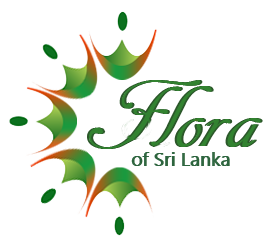.jpg)

Tubers several, arising from woody base of stem, deeply penetrating up to 2 m, ± cylindrical, up to 4 cm diam. sometimes branched, with short roots arising from upper parts and long feeding roots near soil-surface, the surface brown, granular, the tissue white or butter-yellow, soft, traversed by fibres, somewhat mucilaginous, tasteless. Stem usually solitary, up to 20 m long and 5 mm in diam., densely pubescent, becoming less intensely pubescent or rarely glabrate with maturity, commonly somewhat prickly, the prickles straight or slightly upcurved, glossy, yellow-brown, 0.3 mm long. Bulbils not seen. Leaves 3- or 5-foliolate, rarely simple, pubescent to glabrescent above, tomentose beneath with white to yellowish hairs, sometimes becoming ferruginous on veins and margins, drying greenish to brownish above; middle leaflet ± elliptic, 5—15 x 2.5—6.5 cm, apiculate with a blackish, 2—10 mm long forerunner leaf tip, the secondary veins 3—4 pairs, the reticulation obscure on both surfaces; lateral leaflets 3—15 x 2—9 cm, inequilateral, the inner half resembling a half of a middle leaflet, the outer half broader with a rounded base and 2—3 primary veins; intermediate leaflets when present intermediate in size, resembling middle leaflet in shape; simple leaves when present broadly ovate to cordiform, with 5—7 primary veins from base; petiole usually shorter than middle leaflet, 3—12 cm long, tomentose commonly with ferruginous hairs, occasionally prickly near apex or base or both; petioles up to 0.7 mm long, tomentose; stipules absent. Staminate inflorescence paniculate or racemose or both; panicles terminal or axillary, 1—4 per axil, the rhachis up to 35 cm long, tomentose; racemes fascicled up to 10 per axil, 20—70-flowered, the axis 1.5—6.5 cm long, tomentose. Flower 1—4.4 x 1—1.5 mm; bract cordiform to widely depressed—ovate, obtuse to acute, 1—1.8 x 1.2—1.8 mm, densely pubescent without; bracteole similar to bract, sometimes narrower, often oblique at base, 0.8—1.4 x 0.7—1.4 mm; pedicel 0.2—1 mm long; torus expanded into a fleshy cuneiform or obdeltoid base of flower; tepals ± erect but slightly incumbent at apices, often scarious on margin, the outer tepals ovate or triangular, rounded or acute apically, 0.8—1.5 x 0.4—1 mm, membranous to fleshy, pubescent without and on margins, the inner tepals smaller, oblong-ovate, rounded apically, 0.7—1.2 x 0.3—0.6 mm, glabrous; stamens distinctly epitepalous, inserted above base of outer tepals, the filaments c. 0.1 mm long, the anther 0.2—0.3 mm long; staminodes epitepalous, inserted nearly halfway within inner tepals; pistillode 0.4—0.6 mm long, columnar, 3-ridged. Pistillate inflorescence axillary, 1—4 per axil, spicate, pendent, the axis 4—51 cm long, tomentose. Flowers up to 50 per spike, lax; pedicel very short at anthesis; bract and bracteole narrowly ovate to oblong-ovate, acute to acuminate, pubescent without, the bract 1.5—3.7 x 1—1.5 mm, the bracteole 2—2.4 x 0.8—1 mm; tepals almost as in staminate flower but more fleshy, the outer tepals 1—1.4 x 0.5—0.8 mm, pubescent without; staminodes c. 0.1 mm long, inserted at base of tepals; ovary 3—5 x 2—4 mm, densely tomentose; styles connate to halfway, up to 0.5 mm high; stigmas recurved at apex and grooved above. Capsules loosely imbricate, oblong to elliptic, rounded basally, truncate to rounded apically, 1.3—2.2 x 1—1.2 cm, brownish to blackish, densely pubescent to tomentose; wings semi-elliptic, 0.4—0.5 mm broad. Seed 9—16 x 3.5—6 mm including wing, basally cuneate; wing 6.5—1.2 mm long, yellowish brown. (FOC)
.jpg)
.jpg)
.jpg)
.jpg)
.jpg)
.jpg)
.jpg)
.jpg)
.jpg)
.jpg)
.jpg)
.jpg)
